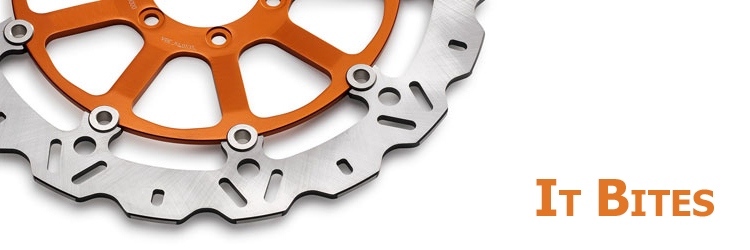Shop by Category
Shop by Brand
Brake - Disc Rotors

Motorcycle disc brakes have become increasingly sophisticated since their introduction in 1969 on the Honda CB750. Motorcycle discs are usually stainless steel, drilled and occasionally slotted, to help remove rain water. Many motorcycle discs are of a floating design where the disc rides on small dowels and is allowed to slightly move laterally. This allows for better disc centering when used with a fixed caliper. It can also prevent heat transfer to the wheel hub under hard braking. Calipers have evolved from simple "single-pot" units to 2-, 4- and even 6-pot items. It is debatable whether the modern marketing-driven fashions of "radially-mounted calipers" and "wavy discs" significantly improve braking. Since (compared to cars) motorcycles have a higher centre of gravity:wheelbase ratio, they experience more weight transference when braking. The front brake(s) provide most of the required deceleration, while the rear brake serves mainly as to "balance" the motorcycle during braking. A modern sports bike will typically have twin front discs of large diameter, but only a very much smaller single rear disc. This is because the rear wheel can only transfer a fraction of the stopping power due to the weight transfer to the front that occurs when braking. The same effect lets the front wheel transfer a lot more stopping power before locking up.
please select Front or Rear Rotors to continue
California Prop65 WARNING: Cancer and Reproductive Harm - www.P65Warnings.ca.gov